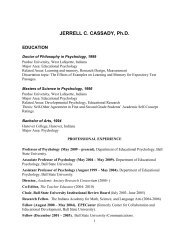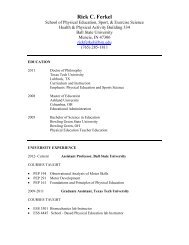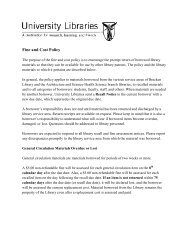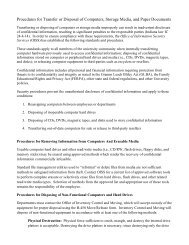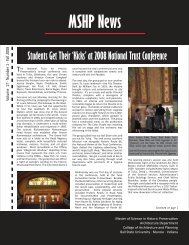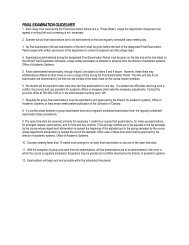Right-Wing Authoritarianism and Prejudice 1 RIGHT-WING ...
Right-Wing Authoritarianism and Prejudice 1 RIGHT-WING ...
Right-Wing Authoritarianism and Prejudice 1 RIGHT-WING ...
Create successful ePaper yourself
Turn your PDF publications into a flip-book with our unique Google optimized e-Paper software.
<strong>Right</strong>-<strong>Wing</strong> <strong>Authoritarianism</strong> <strong>and</strong> <strong>Prejudice</strong> 14(college students or non-college adults), sex of research participant, <strong>and</strong> year of datacollection. If the source article did not specify the year of data collection, it was estimatedas two years prior to the article’s publication year.Statistical AnalysisThe effect size indicator used in the analyses was Hedges’ d corrected for bias inestimating population effect size (Rosenthal, 1994). The d statistic represents thest<strong>and</strong>ardized difference in the mean prejudice scores between people high <strong>and</strong> low inauthoritarianism <strong>and</strong> social dominance orientation. If a study used more than oneprejudice measure, the effect sizes from the various measures were averaged to create theeffect size that was used in the analysis. Effect sizes were computed so that a positive dindicated that people who scored higher on a measure of authoritarianism or socialdominance held more prejudiced attitudes. Weighted mean effect sizes (d.) werecalculated by using sample sizes as weights; confidence intervals were computed usingthe formulas in Hedges <strong>and</strong> Becker (1986). The equivalent correlation coefficient (r.) foreach mean effect size was also reported.ResultsDescriptive SummaryI located 76 publications that reported 136 effect sizes that met the inclusioncriteria for the meta-analysis. Table 1 shows the characteristics of these studies <strong>and</strong> theirmean effect sizes organized by the hypothesis tested; note that any one study couldcontribute data relevant to more than one hypothesis. To provide a context for the results



